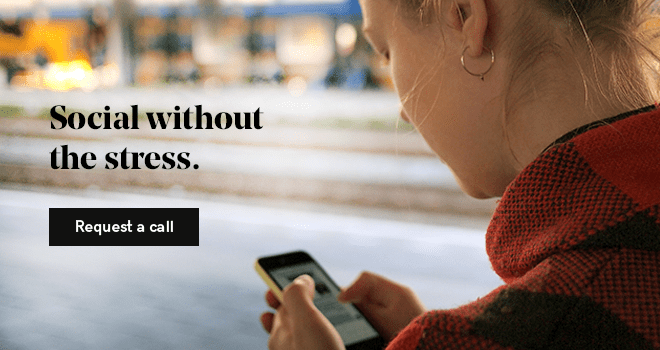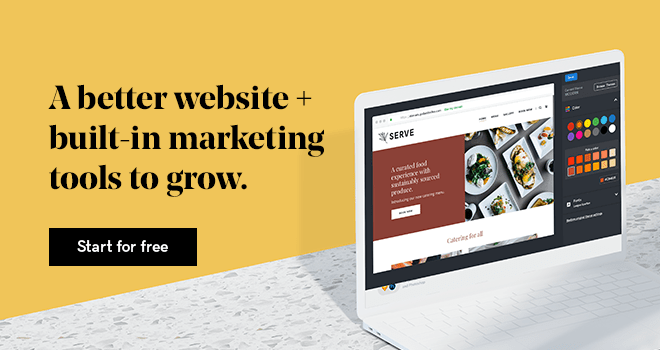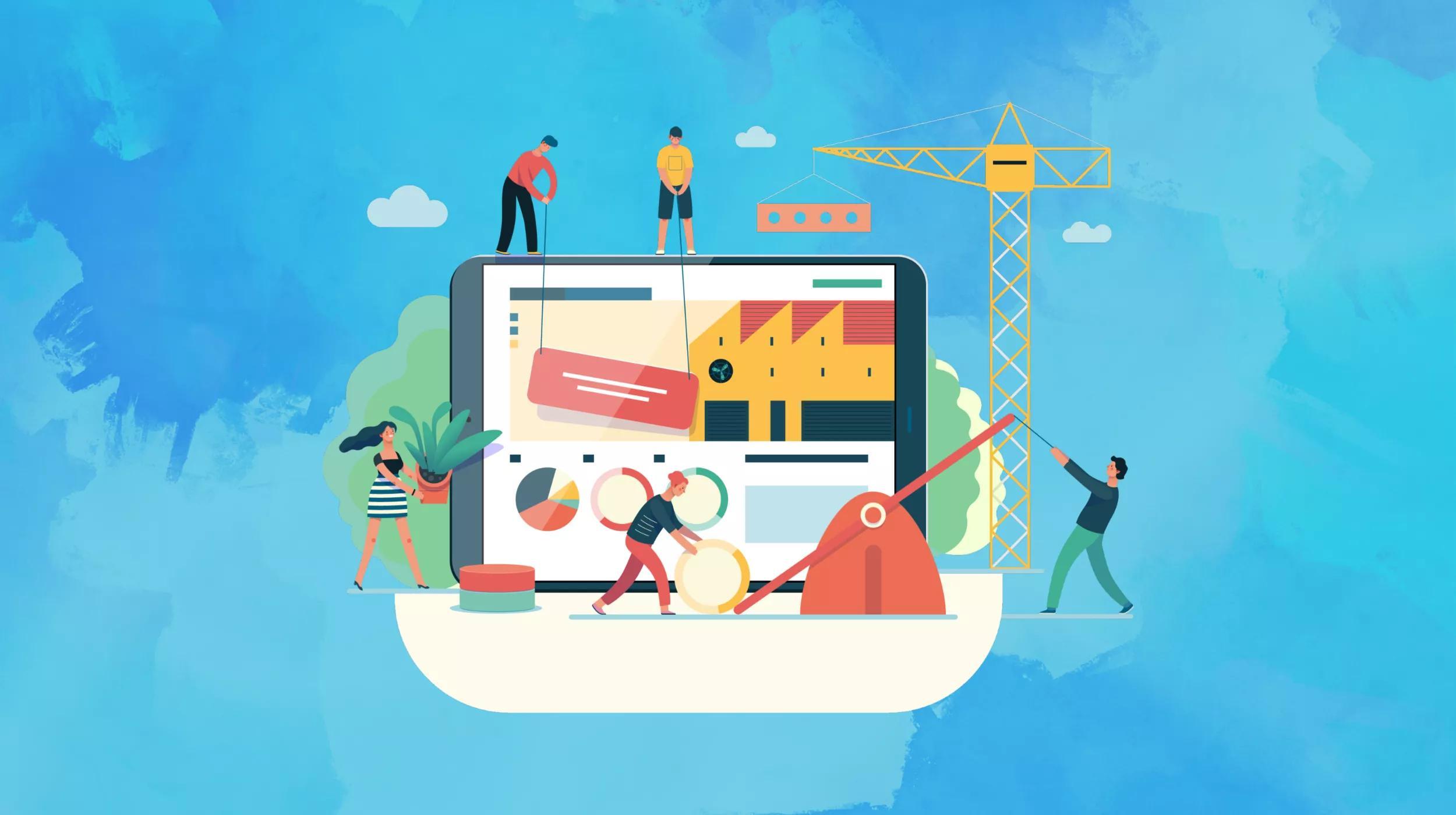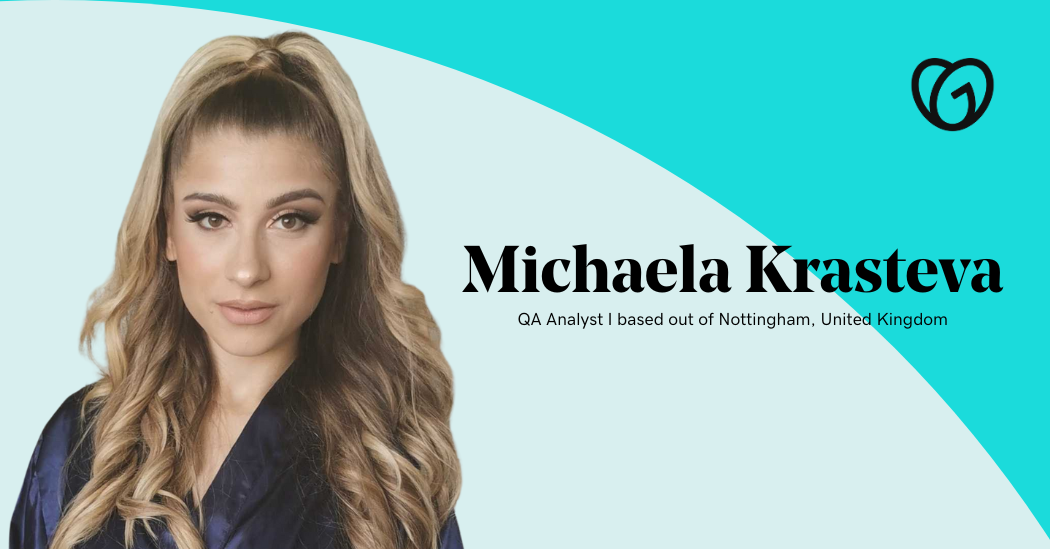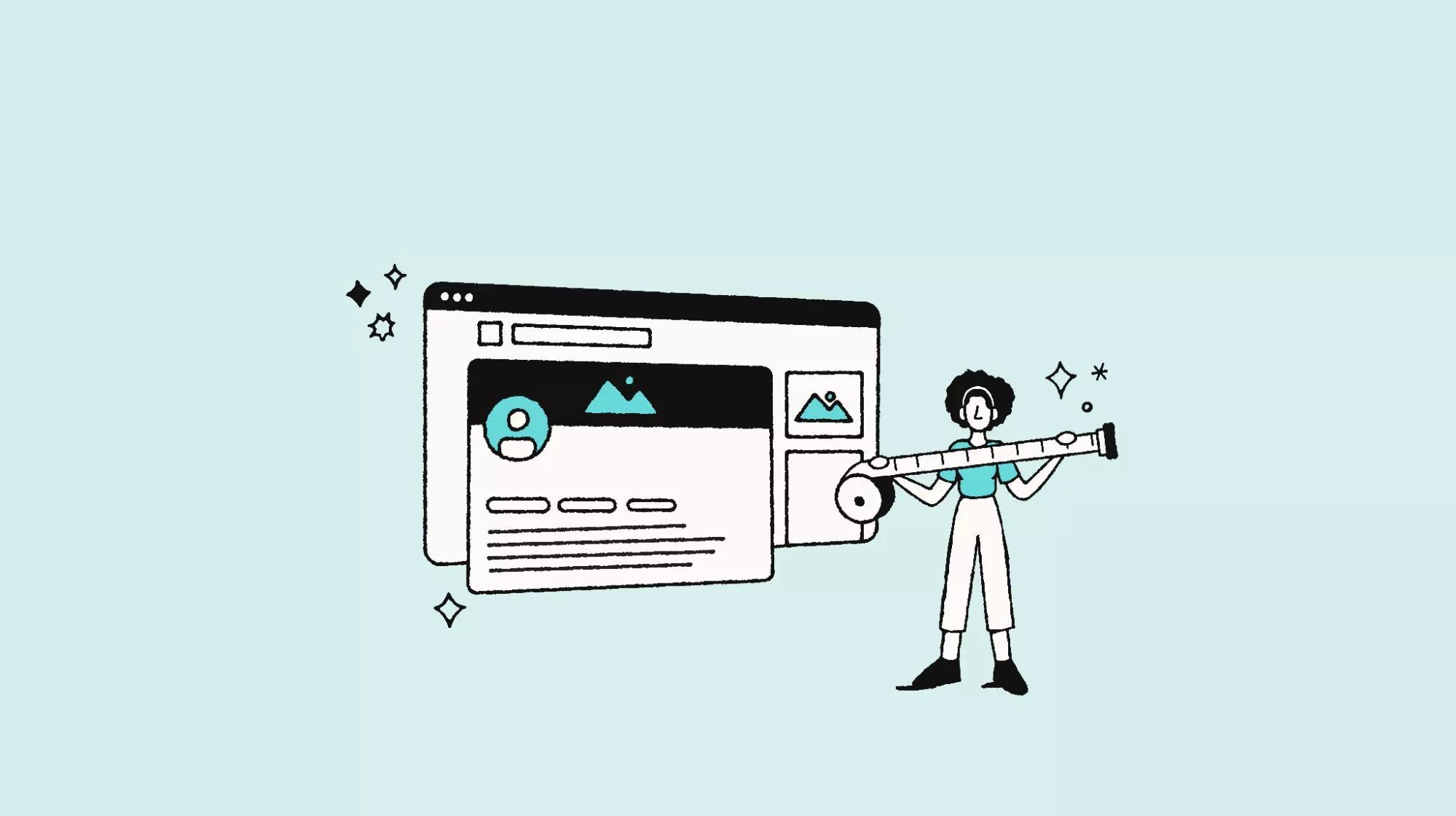This article was originally published on May 23, 2016, and was updated on Feb. 25, 2020.
Since launching in 2016, Facebook Live has been a dominant force in shaping how businesses communicate with and connect to their followers. And, by 2018, the number of Facebook Live views climbed to over 2 billion.
Additionally, more than 80% of adults would rather watch a live video from a brand than any other form of content. Combine that with the fact that the average American adult is spending almost six hours a day watching videos, now is a great time to use Facebook Live for your business.
Not sure where to start? Worried about what to say or do in your live stream? In this guide, we’ll help you get up and running with Facebook Live and looking like the pro you are.
The ultimate guide to Facebook Live for business
To help you get started, our Facebook Live guide will cover the following:
- Get the right equipment.
- Have a strategy.
- Choosing when and where to stream.
- Promote your stream.
- Do a practice run before going live.
- Vary your content.
- Provide context repeatedly.
- Interact with your viewers.
- Ending your Facebook Live stream.
- What to do after your Facebook Live stream.
Let’s jump in.
Get the right equipment
While there isn’t a long list of things you’ll need for a successful live stream, the proper tools and equipment are extremely important.
1. Make sure that you have a Facebook Page and get it verified
If you don’t already have a Facebook Page created, then you’ll need to do that first. As a bonus, if your site is running on GoDaddy’s Websites + Marketing, then we’ll do the setup for you.
Next, you’ll want to get your Facebook Page verified. Verifying your page gives you a blue verification checkmark.
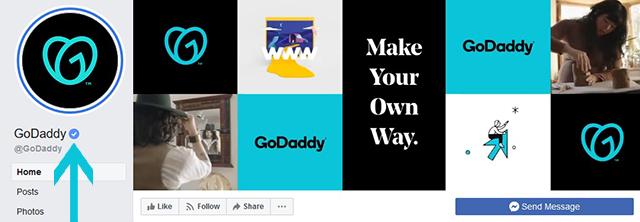
While it’s not a strict requirement to have that verification added to your page, it does let users know that you’ve taken steps to prove that your business is legitimate. In turn, this icon helps attract users to any Facebook Live streams that you’re running, knowing that they’re going to see valid content from a legitimate page.
2. A decent quality mobile phone
You don’t necessarily need anything over the top here, but you’ll want a phone as close to the current generation as possible.
Newer phones have better cameras, faster processors and are able to run the latest apps (like Facebook) with ease. If your phone is starting to slow down after years of use, that latency can translate into choppy, unprofessional videos.
Avoid the struggle and use an up-to-date phone.
To increase the quality of your video, you might want to invest in an inexpensive lens kit with different lens magnifications for shooting a variety of shots like close-ups or wide-angle. Lens attachments can help make your video more stunning and impactful.
3. Excellent internet/data speeds
The typical user has an extremely low tolerance for a choppy or poor quality stream. Most users will abandon a stream entirely if the issue doesn’t clear up within 90 seconds, so this is an extremely important consideration for streaming video.
Facebook Live requires a strong internet connection and fast speeds, so plan ahead and make sure that your internet connection is squared away before you get started.
4. A microphone
If background noise is a possible issue at your streaming location, a lavalier microphone is something you should consider.
The growth of streaming videos via mobile phones means that you can now easily find microphone kits intended specifically for mobile phone streaming.
5. A tripod or selfie stick
Holding your phone at arm’s length for any period of time is going to get tiring pretty fast. Plus, no one wants to watch a shaky video.
Whether you decide on a tripod or selfie stick is going to depend on your streaming requirements. Do you plan on being in a static location and aren’t going to move? A tripod is a simple solution for that. But if you need to be mobile during your stream, a selfie stick would be the better option here.
6. Any props or materials for your stream
Planning on showing a chart you made? Want to demonstrate your new product? Have those items nearby before you start your stream. Having to stop mid-stream to find your missing items isn’t fun for anyone.
7. A glass of water
This one might seem silly, but talking for 10 to 20 minutes straight can wear your throat out quickly. Keep a glass of water nearby and avoid running out of steam before the end of your stream.
Have a strategy

The first rule about Facebook Live is that it’s live, not scripted. So while you won’t want to write down what you are going to say word for word, you do need a strategy for what you are going to talk about.
A good rule of thumb is to give yourself five to 10 bullet points that you’d like to hit during your talk.
If you’re interviewing, think of a few good questions beforehand and write them down.
The nice thing about going Live is that you are often the front person, the camera person, and the person holding the queue cards. This means you can reference your notes during your chat without it seeming too cheesy. Just try not to drop the camera in the process.
It’s also a good idea to formulate a call-to-action for your viewers.
Share a link to what you want them to do next, whether it’s registering for something, reading something, buying something, or checking out your website. You can add that link in the description of your video and as a comment on the stream.
And finally, you’ll want to aim to have your stream run for at least 20 minutes.
Facebook prioritizes videos longer than 3 minutes, but that’s far too short to attract additional viewers. The longer you stay on, the more engagement and viewers you will have time to attract, so aim for a broadcast time of more than 20 minutes.
Content ideas
Need some ideas coming up with topics or a purpose for your live stream? Here are a handful of ideas:
Contests
Use Facebook Live to announce a contest. Make sure the contest asks (not requires) viewers to follow your page and then directs them back to your website or uses some other email collection strategy so that you are capturing your prospective customer data throughout the contest.
Behind the scenes
Are you a baker? A bar owner? Maybe a graphic designer?
There is nothing people like more than seeing what goes on behind the doors at your business.
Go Live and show people what it is you are doing behind the scenes. Give them the nitty-gritty behind your business and show them what it’s really like to do what you do.
Live interviews
When it comes to finding a purpose to go live on Facebook, hosting an exclusive one-on-one interview with a speaker, influencer or celebrity would have to be one of the top reasons.
If you are running an event, for example, it’s a great idea to have someone running interviews via Facebook Live alongside your event. It will strengthen awareness for your event, without giving away the premium content for free, and it really lifts the whole event to a new level.
You could also bring in friends, co-workers, bosses, employees, competitors, whoever, and ask them the tough questions that everyone wishes they had the answer to in your industry.
Another route is to schedule special guests to appear on your Facebook Live stream. This is a great way to meet influencers, speakers and celebrities when possible. Tell them you’d like to steal them for a few questions and go from there.
’Face’ time
Answer customer questions, tell an immersive story or engage around a topic in your industry. If you have something to say (pertaining to your business), say it.
But don’t just talk about your day or fill your live stream with fluff. This might work for major celebrities, but probably not for your business.
Remember, using Facebook Live for business means using Facebook Live in the context of business. The further you get away from the purpose of your business, the less likely you will actually see a tangible business result.
Don’t commit to a live stream unless you are sure you can provide a lot of value.
Related: 9 types of video content to help you move customers through the sales funnel
Choosing when and where to stream
Timing and location for your Facebook Live stream are extremely important.
When
There’s no use putting time and effort into planning a stream if your target audience isn’t available to watch it. To figure out when the best time to stream is, you’ll need to narrow down your target audience first.
If your target audience are school teachers, for example, then you’ll want to run your live streams in the evenings when they’re home from work. Running a stream meant for teachers at 10 in the morning on a weekday won’t be seen by the teachers in your audience and will have been a waste of time.
Facebook offers tools that can help you focus in on your audience through their Audience Insights reports. With that tool, you can see age, gender, job titles, etc., which can help you to better tailor when you choose to stream.
Related: Why a target audience matters and how to find yours
Where
We’ve touched briefly on location considerations for streaming a bit earlier, but let’s take a deeper dive.
One of the most important considerations when it comes to setting up at a location for Facebook Live is your internet connection.
You could be at the most beautiful location in the world, but if you have a weak or non-existent data connection, streaming will be a failure.
Try to also find a location that won’t be too distracting for your viewers. Being in an overly-noisy or busy location has the potential to drown you out or take the focus off of you. Find a place that limits the distractions for the best impact.
Another consideration is finding a location that your viewers will find interesting. Like we mentioned earlier, viewers love getting a behind-the-scenes view of your company. Show viewers a tour of your office, a bit of your daily routine, or where you tend to do your best work.
It doesn’t have to be fancy or elaborate, but keep it interesting.
Promote your stream

Before your first Facebook Live stream for your business, you’ll want to be sure that you’ve promoted the event to your followers. Running a live stream event without letting anyone know beforehand will likely result in very few or no viewers.
Avoid disappointment and promote your live stream.
Treat your stream like an event
Schedule a set time — at least a week in advance — for your Facebook Live stream. Attract attention by asking for questions in advance, promoting a contest, or teasing a new product reveal.
You’ll want to let users know what to expect without giving away the meat of the actual stream.
Cross-promote your stream event to related groups
If you belong to groups pertaining to your industry on Facebook, let those groups know that you’ll be hosting a live stream. This can be especially helpful in attracting viewers if your Facebook Page doesn’t have many followers. Make sure to keep your promotional posts relevant to the groups that you’re posting in to avoid being seen as spammy.
Related: How to use Facebook groups to grow your business
Promote outside of Facebook
Do most of your followers reside on Twitter? Do you have a sizable contact list for your email marketing efforts? Let them know about your upcoming stream and how to find you.
Do a practice run before going live
You likely have often heard the phrase, “practice makes perfect.” And, as with most technical processes, live streaming isn’t an exception.
Imagine going live and not realizing that your audio isn’t working. Yikes.
Before your first Live stream, you’ll want to practice what you’re planning to cover, test out your equipment and make sure the lighting and sound are good in your chosen location.
You can test your Facebook Live stream on your own Facebook profile (keeping the video hidden, of course) by selecting “Only Me” when selecting the Live option.
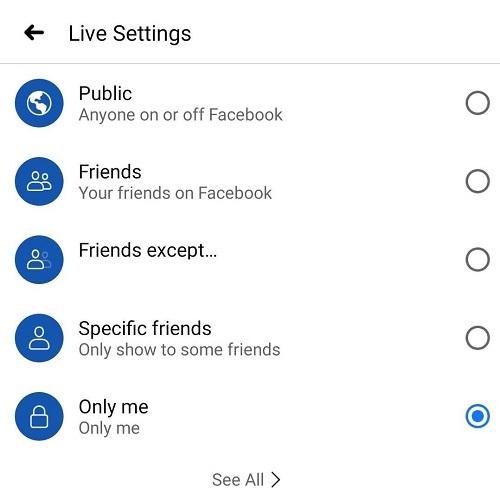
Once you’ve made sure that your video and audio quality are good, you’ll want to make sure that your chosen location translates well on video. Try different angles or focal points and see what works best for you.
Now that you hopefully have the technical kinks worked out, you’ll want to practice your content and timing.
Make sure that you’ve practiced the points that you want to touch on in your stream and that you’re reaching at least 20 minutes with your content. Try to make sure that you’re not rushing or talking too quickly, and practice pausing for effect.
Vary your content
No one wants to tune into your Live stream to see the same content week after week. You’ll want to plan out the topics that you’d like to cover well in advance in order to be sure that you’re not repeating the same thing over and over.
An editorial calendar is handy in this situation.
Beyond just varying your stream topics, try mixing things up and choosing new or interesting locations. A change in scenery can be enticing for your regular viewers and invite them to keep watching.
If you’re primarily using Facebook Live to teach your viewers, for example, mix things up a bit by running a Q&A. Feature an employee on your stream. Comment on relevant current events.
Keep your content fresh and interesting to keep your audience engaged.
Related: How to create a social media content calendar
Provide context repeatedly
You’ll want to keep in mind that Facebook Live viewers will come and go throughout your broadcast. While you’re likely to introduce yourself and your topic at the beginning of your stream, it’s a good idea to reintroduce yourself and your topic throughout your stream.
Say something like, “Welcome to everyone that’s just joined our broadcast! Our topic today is…”
Consistently re-focusing and re-introducing your live stream will keep things focused and viewers engaged with your video.
Interact with your viewers
Throughout your stream, your viewers will be able to interact with you via the Live chat and Live reaction systems. These systems are great ways to engage with your viewers. Let’s go over a few points to keep in mind.
Handling questions
Facebook Live is meant to build engagement with your audience. Don’t go on a rant or get too focused on your talking points and ignore all your fans. Engage with them. Answer their questions.
If they are asking something unrelated, you can either choose to answer it quickly or tell them you will have to talk about it another time.
Try to stay on topic, but do not ignore a good question.
Try to encourage questions as often as possible, and if you’ve got enough fans, you can even make the entire session all about question and answer. It’s a great way to engage with your audience, pass your knowledge and build authority.
Handling rude comments
You’re going to get trolled, spammed, or hated at some point. That’s just what happens when you put yourself out there to the world.
For the most part, it’s best to ignore rude comments and foul language. If you can, click on and remove the comment from your Live chat, so as not to distract other fans.
You can also block users in real-time if necessary. Simply press and hold their comment and select “Block User.” Use this as a last resort, though, because even haters can have a positive influence on you and your brand. After all, they are voluntarily watching you.
Ending your Facebook Live stream
You should end every Facebook Live session with a clear call-to-action that is specific to the topic at hand, yet sensitive to where you are posting your stream (like in someone else’s group).
Always encourage follows
Remind people to follow you multiple times throughout your video.
Send them to your website
If you’re wrapping things up, tell viewers to head to your website or blog for more of your thoughts on the subject matter.
Ask them to browse products, courses or posts, or send them to something specific if you’ve previously done a blog post on a topic related to your stream.
Get their email
Do you have an email capture set up on your website? Send people there. If not, ask them to message you or your page with their email address and let them know you will add them to your email list.
Facebook Live builds trust with your viewers, which makes collecting an email address all that much easier.
Related: How to drive email sign-ups from Instagram
Sell them something
If you’ve got a product related to the topic of your Facebook Live video, and you’ve been building trust with your audience for a while, it’s OK to sell straight from your stream — but don’t make this an every video kind of habit.
Your first goal is to provide value. Your second goal is to build an audience. And your third goal is to sell something. Make sure you’re tackling these in order, or it won’t work.
When selling on your stream, make sure it’s related to the topic. You can’t just sell someone on plumbing services when you were talking about how to fix a leak. At that point, your job is just to remind people who you are and who to call in the event they need plumbing services.
What to do after your Facebook Live stream
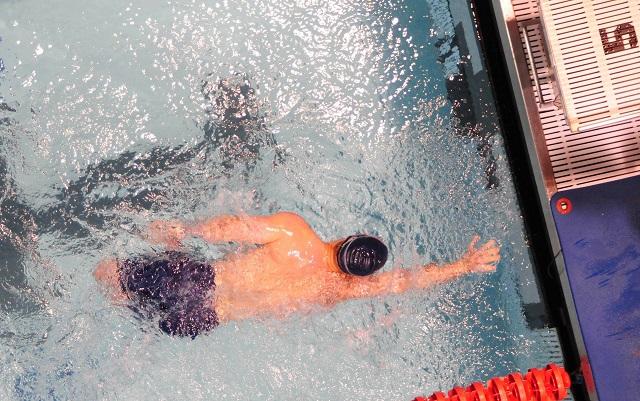
Phew, it’s over. You’ve closed your stream and now you’re done, right? Wrong!
Your Live stream just turned into a regular video post on your feed, except one crucial bonus: Facebook continues to promote your Live videos for a short period of time after you’ve closed your stream. This means your video might already have some virality and buzz to it. Take advantage and do these three things:
1. Add a link in the comment section
If appropriate, link to whatever your main call-to-action was in the video, and always remind people to follow you in the process.
2. Promote it to help grow your audience
You can share it in a group. Send a link to your email list. You could even turn it into a video ad if you wanted or even add it to a blog post on your website.
If your Facebook Live stream was any good at all, I’d recommend following it up with some promotion.
3. Answer any comments you didn’t get to
If you missed someone, make sure to respond in text afterward. Hosting a live stream is all about engagement! Don’t leave them hanging. Stick around for at least 30 minutes after you’ve closed out to answer any comments that might pop up.
Final thoughts on Facebook Live for business
If you’re a small business owner thinking about sharing some of your trade secrets, answering some of your customers’ problems and engaging with them in real-time, and you’re good in front of the camera, you might just find Facebook Live is the platform for you to get some additional exposure.
That being said, don’t jump into this with one Live video and expect there to be 20, 50 or 100 viewers. You need to commit to at least 15 Facebook Live streams for your business in order to make this a concrete test for you to start gaining some traction.
To really hit this thing head-on, it’s recommended that you post every other day for a month, test multiple different calls-to-action, post across your page, your business page, and many groups, and see how people respond.
Getting tangible results for your business requires focus and a solid strategy.
If you’ve got what it takes, there aren’t many good reasons not to try Facebook Live for your business. It just might be the next best thing for your venture.
This article includes content originally published on the GoDaddy blog by Derric Haynie.

